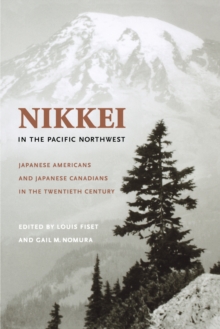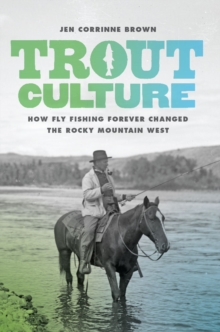
The Nature of Borders : Salmon, Boundaries, and Bandits on the Salish Sea Paperback / softback
by Lissa K. Wadewitz
Part of the Emil and Kathleen Sick Book Series in Western History and Biography series
Paperback / softback
Description
Winner of the 2014 Albert Corey Prize from the American Historical AssociationWinner of the 2013 Hal Rothman Award from the Western History AssociationWinner of the 2013 John Lyman Book Award in the Naval and Maritime Science and Technology category from the North American Society for Oceanic HistoryFor centuries, borders have been central to salmon management customs on the Salish Sea, but how those borders were drawn has had very different effects on the Northwest salmon fishery.
Native peoples who fished the Salish Sea--which includes Puget Sound in Washington State, the Strait of Georgia in British Columbia, and the Strait of Juan de Fuca--drew social and cultural borders around salmon fishing locations and found ways to administer the resource in a sustainable way.
Nineteenth-century Euro-Americans, who drew the Anglo-American border along the forty-ninth parallel, took a very different approach and ignored the salmon's patterns and life cycle.
As the canned salmon industry grew and more people moved into the region, class and ethnic relations changed.
Soon illegal fishing, broken contracts, and fish piracy were endemic--conditions that contributed to rampant overfishing, social tensions, and international mistrust.
The Nature of Borders is about the ecological effects of imposing cultural and political borders on this critical West Coast salmon fishery. This transnational history provides an understanding of the modern Pacific salmon crisis and is particularly instructive as salmon conservation practices increasingly approximate those of the pre-contact Native past.
The Nature of Borders reorients borderlands studies toward the Canada-U.S. border and also provides a new view of how borders influenced fishing practices and related management efforts over time. Watch the book trailer: http://www.youtube.com/watch?v=7ffLPgtCYHA&feature=channel_video_title
Information
-
Available to Order - This title is available to order, with delivery expected within 2 weeks
- Format:Paperback / softback
- Pages:384 pages, 27 b&w illus., 7 maps
- Publisher:University of Washington Press
- Publication Date:10/09/2012
- Category:
- ISBN:9780295991825
Other Formats
- Hardback from £87.85
Information
-
Available to Order - This title is available to order, with delivery expected within 2 weeks
- Format:Paperback / softback
- Pages:384 pages, 27 b&w illus., 7 maps
- Publisher:University of Washington Press
- Publication Date:10/09/2012
- Category:
- ISBN:9780295991825










